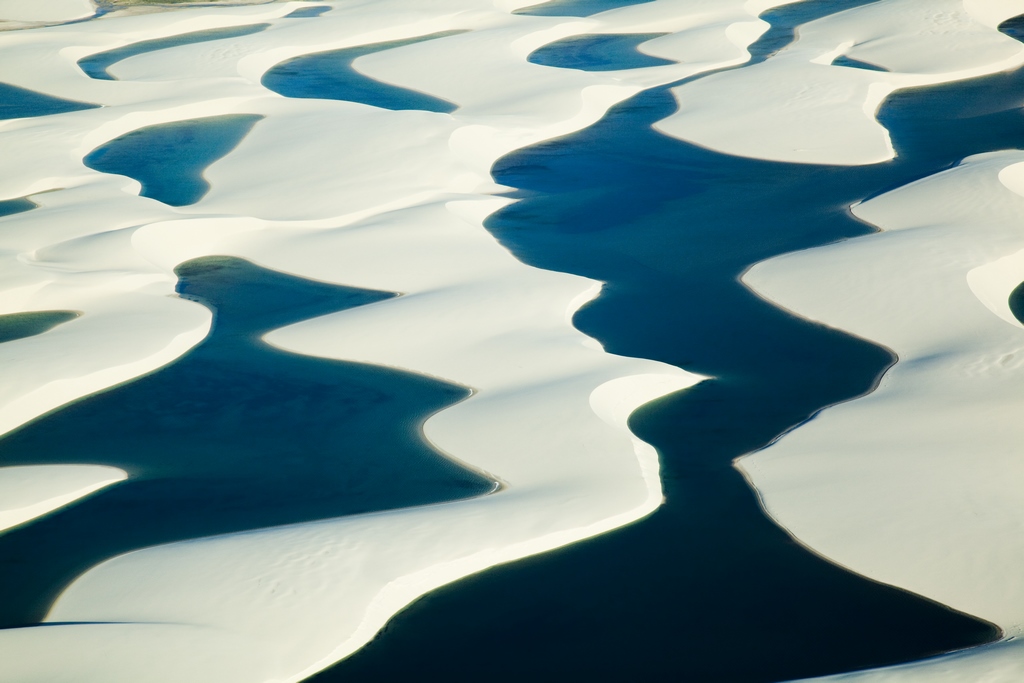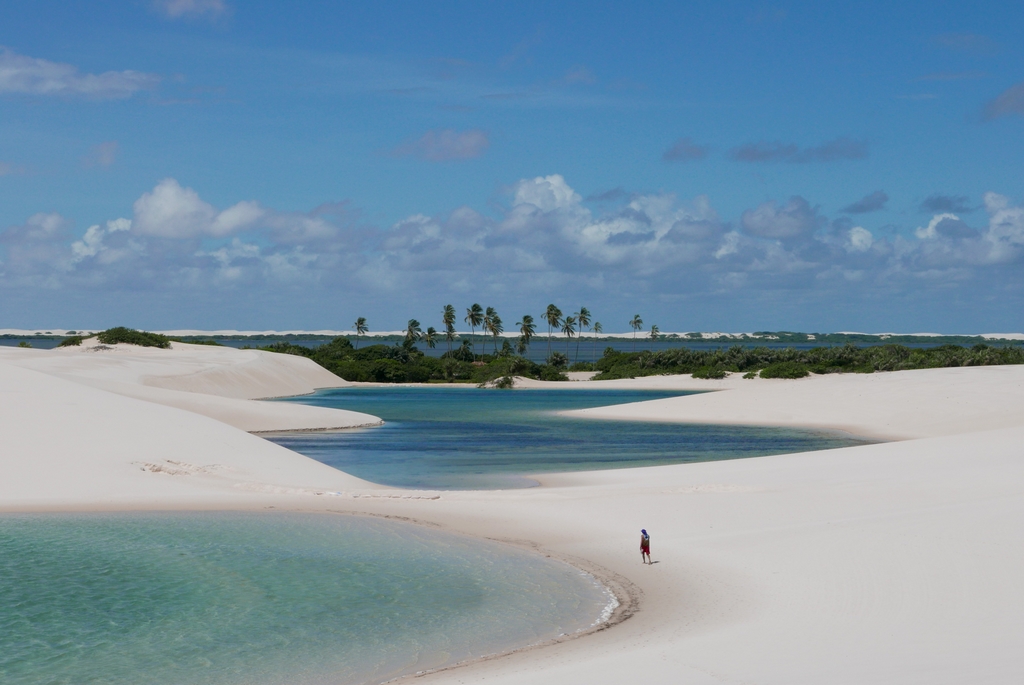Bedsheets of Dunes and Water


Sand, water, sky and the occasional patch of mangroves conspire to create one of the most breathtaking and unusual places in the Southern Hemisphere, along Brazil’s Atlantic coast – a place where water is shaped by the forces of wind and the earth below.
By Eric Herman
It’s one of the most unusual and even surreal landscapes on Earth. Miles upon miles of undulating sand dunes interwoven with turquoise and blue lagoons that gather and meander in a sweeping tapestry that looks like something from a science-fiction movie. A truly hypnotic dreamscape that is both remote yet welcoming.
Lençóis Maranhenses is a national park in the state of Maranhão in northeastern Brazil. It stretches 43 miles (70 kilometers) along the country’s Atlantic coastline. To many, the vast sand dunes look like somebody added water to the Sahara, but in fact, the place is not technically a desert, despite the sand dunes’ barren and decidedly desert-like appearance.
The place receives and average of 47 inches of rainfall per year, actual deserts have less than 10 inches annual precipitation. The confluence of sand and water, make this a truly unique environment. The dunes are formed by two rivers that flow just south of the park, the Parnaiba and Preguicas, which deposit sand from Brazil’s vast inland regions.
While this is one of the most common ways that beaches form the world over, here powerful onshore winds have distributed the abundant sand as much as 30 miles inland, creating dunes as far as the eye can see, some drifting as high as 130 feet.
Although coastal sand dunes are not unusual by any means, the intricately shaped bodies of water that form amongst them are. During the wet season, January to June, heavy rains visit the region, rapidly filling the low point between the dunes.
Unlike other sandy places where rain falls, the water does not drain away into the sand, but instead is contained by impermeable bedrock immediately beneath the sand. The seasonal bodies of water number in the thousands and can stretch up to 300 feet in length and reach depths of 10 feet.

The white sand and azure sky conspire to give the water its inviting blue/green color.
In Portuguese, Lençóis Maranhenses, means the “bedsheets of Maranhão.” Even though the park is only accessible on foot, or by off-road vehicles, each year tens of thousands visit the dunes and lagoons, where they swim in water with mild temperatures ranging from 81 to 90 degrees Fahrenheit, in balmy air temps in the low 80s.
Although plant material is relatively scarce, some of the larger lagoons are bordered by stands of mangroves and are home to delicate ecosystems. The largest lagoons, Azul and Bonita are among the more popular destinations with their oasis-like ambiance. Guided tours are recommended because it is very easy to get badly lost within the vast and intricate landscape.
When the dry season takes hold in late spring and early summer, the lagoons slowly evaporate at a rate of approximately three feet per month, and eventually become completely dry, leaving behind a truly arid expanse that seems devoid of life.
Amazingly, it is not. Lensois Maranhenses is home to the wolffish, which originally came from the rivers along with the sand. During the dry season, the fish burrow into the mud where they enter a dormant state until next rainy season — hiding beneath the bedsheets.
Photo by San Hoyano | Shutterstock









